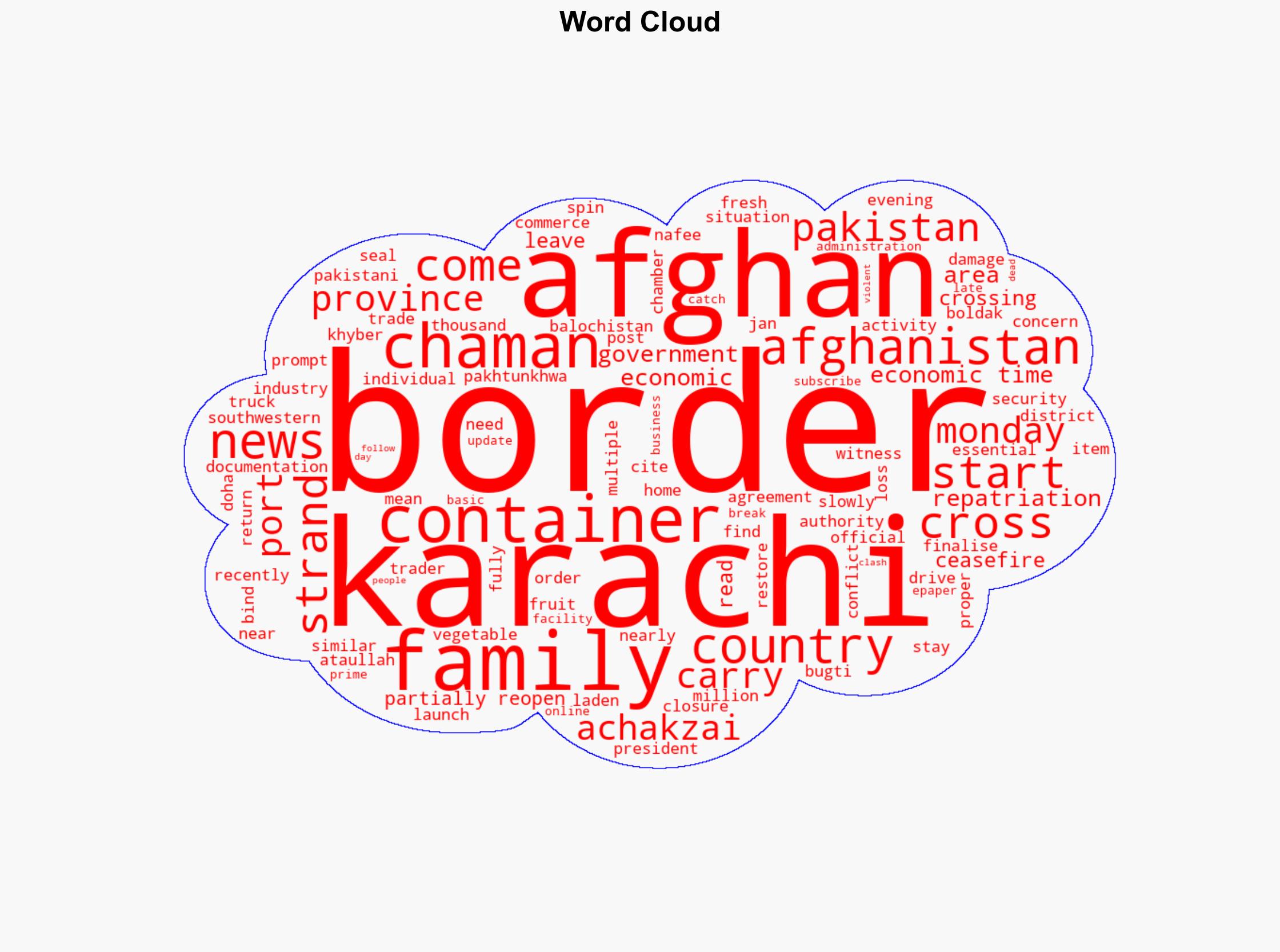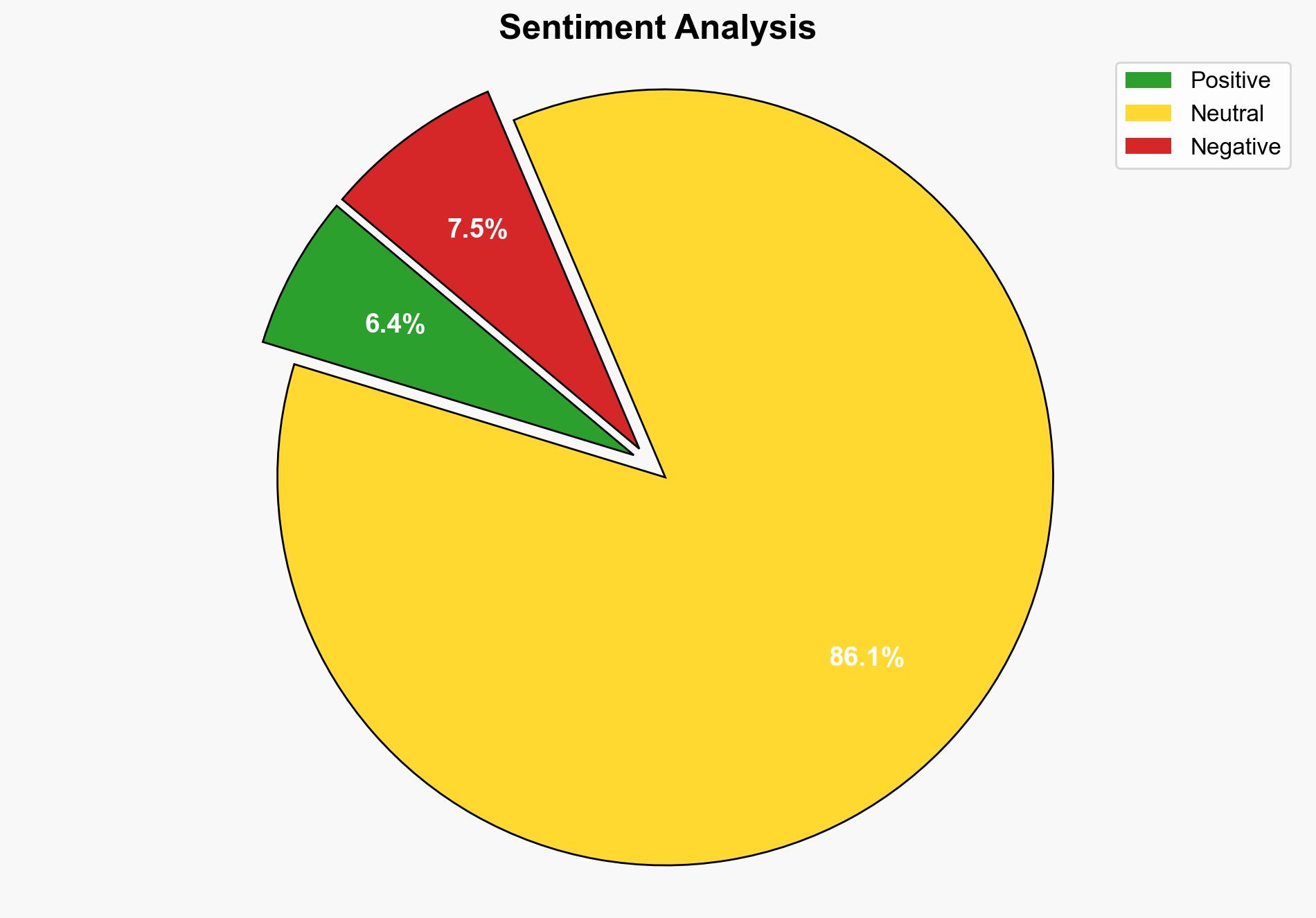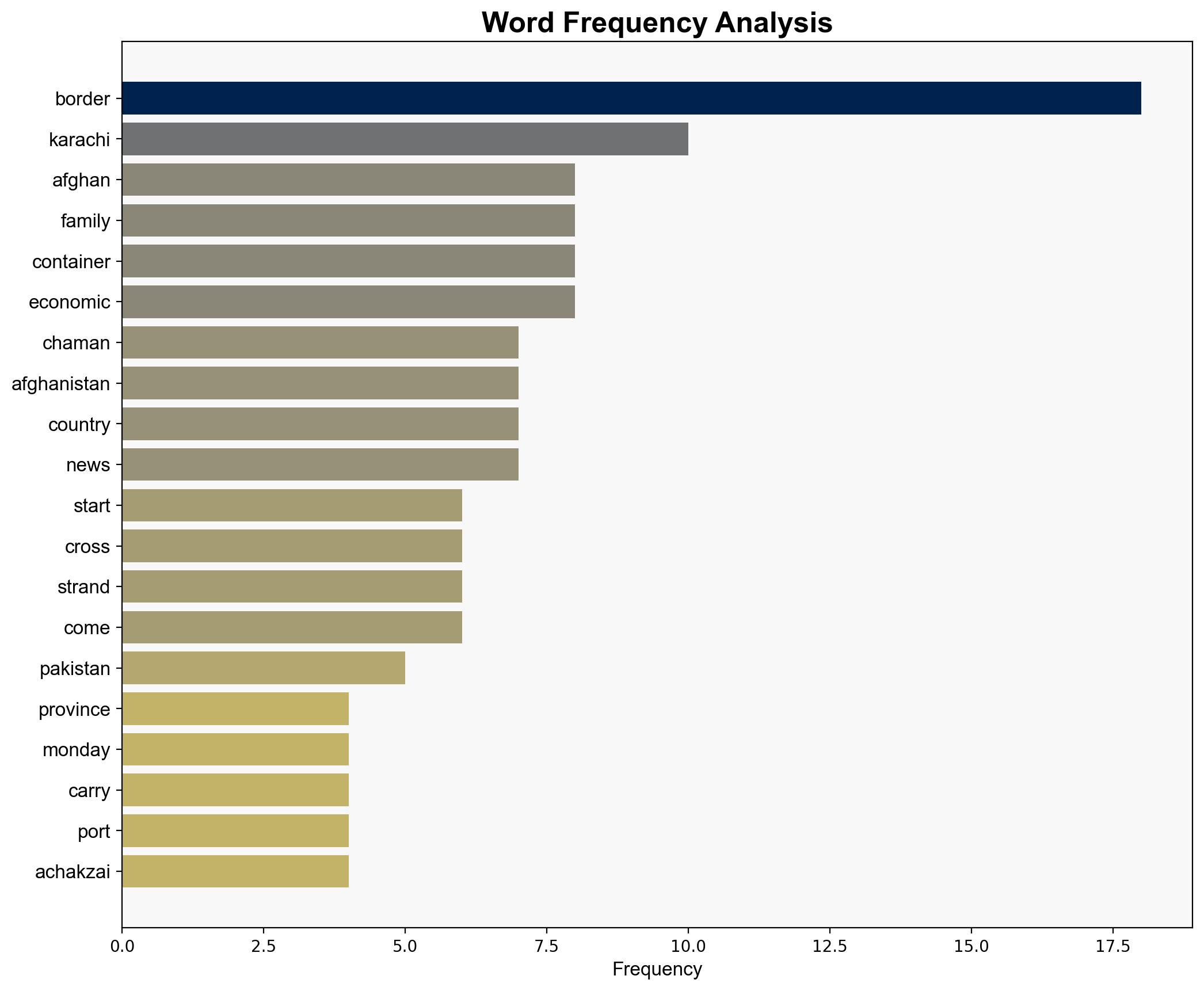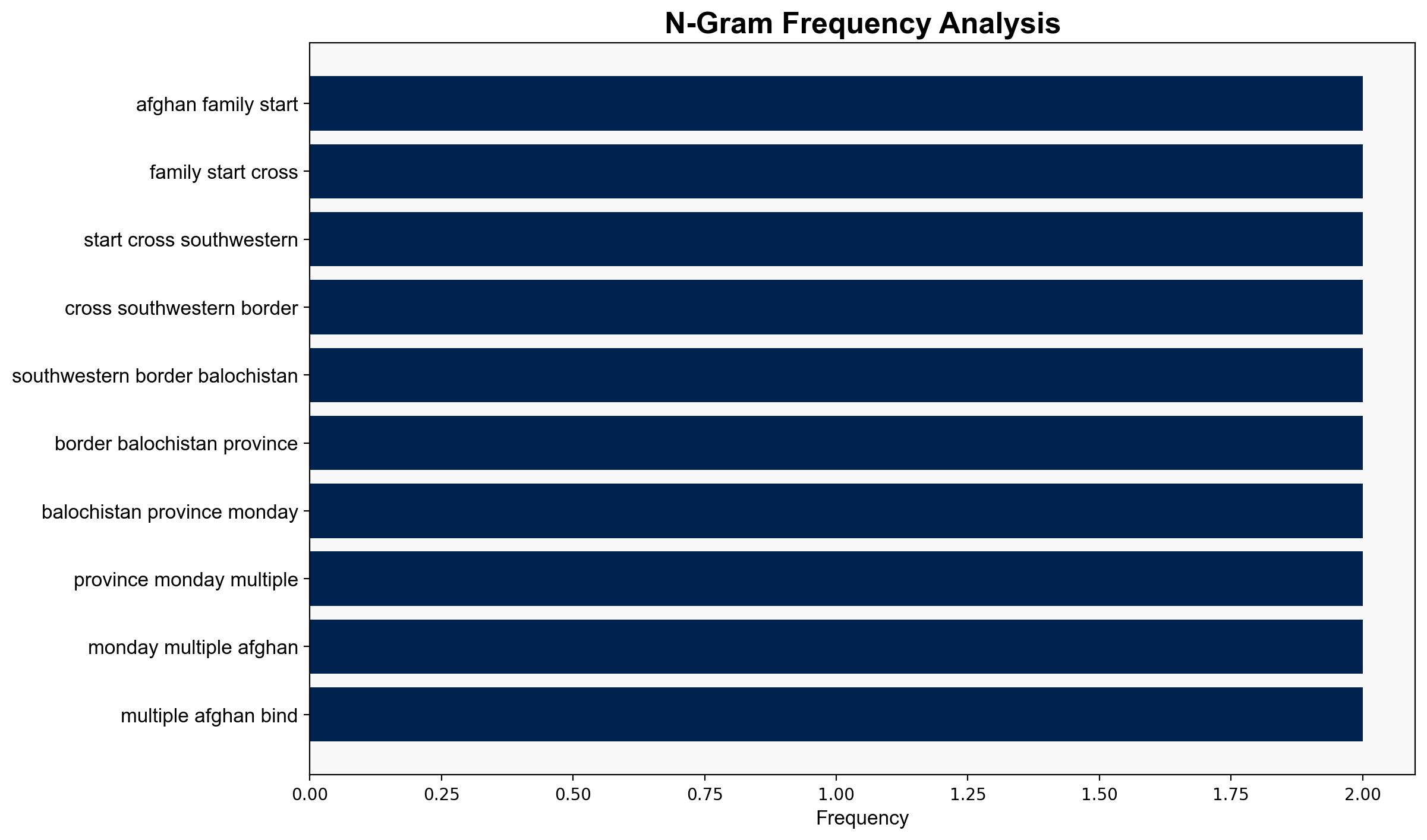Chaman border crossing partially reopens after Pak-Afghan ceasefire – The Times of India
Published on: 2025-10-21
Intelligence Report: Chaman border crossing partially reopens after Pak-Afghan ceasefire – The Times of India
1. BLUF (Bottom Line Up Front)
The partial reopening of the Chaman border crossing following a ceasefire between Pakistan and Afghanistan suggests a tentative stabilization of trade and movement, but underlying tensions remain. The most supported hypothesis indicates a strategic move to alleviate immediate economic pressures while maintaining leverage in ongoing negotiations. Confidence level: Moderate. Recommended action: Monitor developments closely and engage in diplomatic efforts to ensure full restoration of border activities.
2. Competing Hypotheses
1. **Economic Necessity Hypothesis**: The partial reopening is primarily driven by economic imperatives, aiming to mitigate the significant financial losses incurred by traders and the government due to the closure.
2. **Strategic Leverage Hypothesis**: The reopening is a tactical decision to maintain strategic leverage over Afghanistan, using economic interdependence as a tool to influence Afghan policies and actions.
Using ACH 2.0, the Economic Necessity Hypothesis is better supported by the evidence of stranded goods and economic damage reported by Nafee Jan Achakzai. However, the Strategic Leverage Hypothesis is also plausible given the geopolitical context and recent repatriation drives.
3. Key Assumptions and Red Flags
– **Assumptions**: It is assumed that both countries are equally committed to maintaining the ceasefire and that economic losses are a primary motivator for reopening the border.
– **Red Flags**: The lack of detailed information on the terms of the ceasefire and potential hidden agendas in the repatriation drive could indicate underlying tensions or strategic deception.
– **Blind Spots**: The impact of internal political dynamics within Pakistan and Afghanistan on the border situation is not fully addressed.
4. Implications and Strategic Risks
– **Economic Risks**: Continued partial closure could exacerbate economic instability and strain bilateral relations.
– **Geopolitical Risks**: The situation could escalate if either side perceives a breach of the ceasefire, potentially leading to renewed conflict.
– **Psychological Risks**: The uncertainty surrounding the border situation may lead to increased anxiety among local populations and traders.
5. Recommendations and Outlook
- Engage in diplomatic dialogue to ensure the ceasefire holds and explore opportunities for full border reopening.
- Monitor trade flow and economic indicators to assess the impact of the partial reopening.
- Scenario Projections:
- **Best Case**: Full reopening of the border, leading to economic recovery and improved bilateral relations.
- **Worst Case**: Breakdown of the ceasefire, resulting in renewed conflict and prolonged economic disruption.
- **Most Likely**: Gradual normalization of border activities with intermittent tensions.
6. Key Individuals and Entities
– Nafee Jan Achakzai
– Ataullah Bugti
7. Thematic Tags
national security threats, regional focus, economic stability, geopolitical strategy





